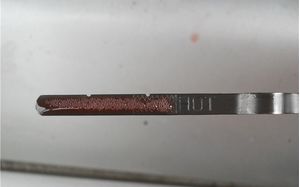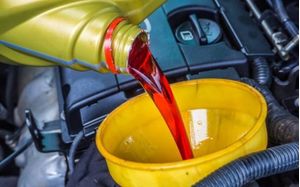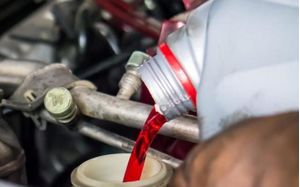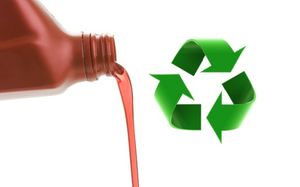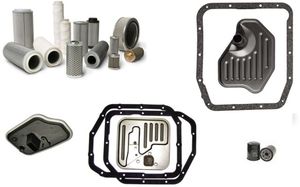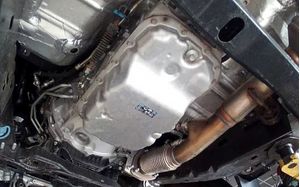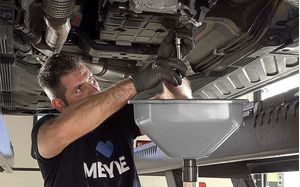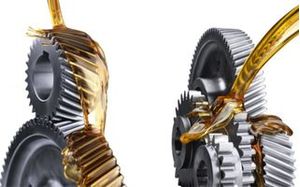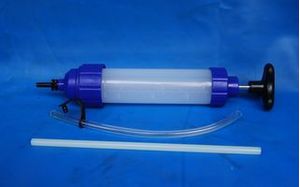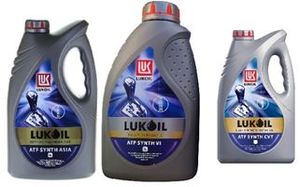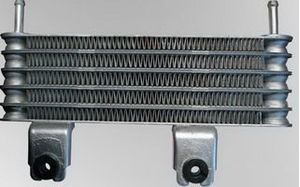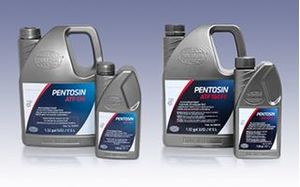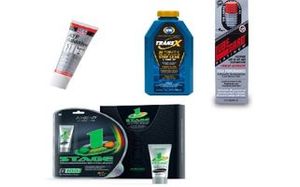Items marked by the "ATF" tag:
Articles
Not always bubbles on transmission dipstick are caused by insufficient ATF (transmission oil) level or its overflow. Problem can be more serious. As a rule, this symptom indicates certain
faults in the transmission operation. In
most cases, transmission fluid foaming is caused by abnormal ATF levels, but sometimes it is a result of transmission being damaged badly.
Most of automatic transmission issues stem from ATF, thus repair professionals pay special attention to ATF and its timely change. If potential risks of lower ATF level are intuitively clear to most of car owners (oil starvation can lead to numerous malfunctions or even failure of the whole transmission unit), the situation with the fluid overflow may be misleading.
Recently,
Lukoil, a Russian oil company, has announced the start of production of its new
line of specialized transmission fluids. According to the company’s press
service, three types of fluids included in the ATF Synth line will be produced
at Lukoil plants located in Russia.
A crucial role in operability of CVTs is given to specific fluids (CVTF) used only in variable transmissions. These fluids have great lubricating properties and at the same time they prevent the belt from slipping on the pulleys. The achievement of such an objective is possible thanks to the use of unique packs of additives. But sometimes young drivers of CVT-equipped cars often wonder whether it would be safe to use automatic transmissions fluids (ATF) in their CVTs.
The most common symptom of the automatic transmission malfunction lies in kicks and jerks during the process of gear shifting. In this article, we will explore the main causes of kicks and jerks in automatic transmissions and give some recommendations on how to deal with such issues.
Today, many car owners can quickly and easily change TFs in their cars. As a rule, after each TF change they have a canister full of used fluid that lost its useful qualities. Subsequently, many drivers frequently do not know what to do with used oil and how to dispose of it. It this article, we will consider what should be done to used fluid.
Many drivers know about the importance of ATF change, but, unfortunately, they frequently forget about filter replacement. In this article, we will learn why it is important to timely replace automatic transmission filters, examine their types, and become familiar with their replacement frequency.
In automatically shifted cars an oil pan services as a so-called storage for ATF, and ensures for a convenient access point to the transmission filter and fluid. For automatic transmissions (ATs) ATF is vitally important, as it lubricates transmission parts and prevents overheating, thereby avoiding early wear of the transmission unit.
MEYLE, the German supplier of auto components and repair kits, has recently released a new video, which explains how to change ATF in automatic transmissions.
As a rule, many car owners assume that various technical liquids and lubricants, including transmission fluid, do not have an expiration date , i.e. they can be stored as long as necessary before intended use. But it is a mistaken belief, because the shelf time of transmission fluids is limited by manufacturers. In this article, we will consider this issue in more detail.
Transmission repair specialists frequently have to deal with such an issue as the mixing up of engine coolant (antifreeze substance) with the automatic transmission fluid. It is a very serious problem which can lead to the transmission failure and highly-priced repair or even transmission replacement. In this article, we will consider causes of this problem and possible solutions.
Young drivers sometimes wonder whether it is possible to use the engine oil as a lubricant for transmission parts. This is due to the fact that modern engine oils are designed for heavy loads and also include a wide range of active chemical additives for operation under severe conditions. In this article we will address this question.
If a car driver decides to change the fluid inside the transmission or engine, then he needs a convenient and high-quality unit for extraction of old fluid, its transfer, and most importantly for pumping in the new transmission fluid inside the gearbox (or other car component). Thus, fluid syringes (also known as oil suction guns) became quite popular among car repair specialists and drivers.
This year, LUKOIL, one of the leading oil companies in Russia, releases not only new engine oil GENESIS, but also launches production of specialized transmission fluids SYNTH VI for Japanese and Korean cars.
In the process of the car movement, the automatic transmission is subjected to significant loads and requires a proper and high-quality cooling. In this article we will consider the automatic transmission cooling system design and its operation principles.
CRP Automotive, a major source of OE-quality change and service parts, now offers two new Pentosin ATF solutions for Mercedes applications. Pentosin ATF 134 FE (Blue) is designed for the most advanced Mercedes-Benz 7-G Tronic Plus automatic gearboxes, while Pentosin ATF 134 (Red) is intended for Mercedes-Benz 4, 5, and 7-speed gearboxes.
When buying a used car, it is recommended to invite a specialist who can perform diagnostics of the body, engine, suspension, and especially automatic transmission (one of the most expensive car components). But what if you have no chance to examine the car with the help of professionals? In this article we will provide helpful tips on how to examine a used car equipped with an automatic transmission.
ATF issues are considered to be the main reason of automatic transmission failure, therefore some drivers use ATF additives. Automatic transmission fluid (ATF) additive is a luquid with unique characteristics which is used for improvement of the automatic transmission performance and prolonging its service life.

